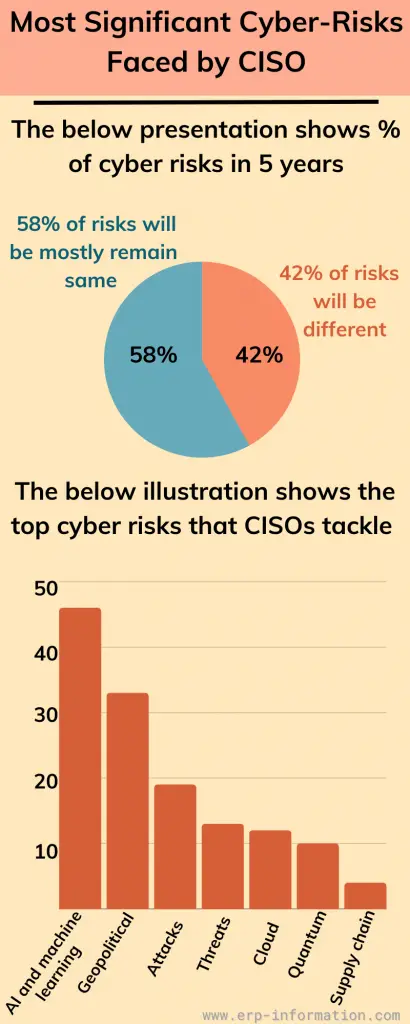The number of cyber threats continues to rise; companies require a specialist with expertise in safeguarding their digital information against such threats.
This is where the Chief Information Security Officer (CISO) plays a crucial role in establishing secure networks, devising data access policies, and being knowledgeable about incident response procedures in case of a breach.
This blog post explores the roles and responsibilities of CISO, including evaluation, skills, and experiences.
Who is the Chief Information Security Officer?
Chief Information Security Officers are senior executives responsible for developing and implementing an organization’s information security policies and procedures to manage cybersecurity. They are in charge of making sure organizations stay safe from online threats.
The Chief Information Officer (CIO) has a similar job but needs to know more than just technology.
They need to understand the risks that could affect the business and have the skills to develop solutions as new threats arise.
Roles and Responsibilities of CISO
CISO is a group that helps protect an organization’s data, like sensitive information, ideas, and secrets. They work with the Chief information officer (CIO) and Chief technology officer (CTO) to create a plan for keeping the organization’s data safe.
His job depends on how big or complex the organization is. Their jobs might include:
- Developing and implementing security policies and building procedures to protect the organization’s digital assets.
- Conducting risk assessments to identify vulnerabilities in the organization’s information systems and developing strategies to mitigate those risks
- Creating plans to protect the organization’s online information and technology.
- They need to let the leaders understand the company’s cybersecurity.
- Checking often ensures them the cyber and technology risk is managed well.
- Managing security incident response plans ensures a rapid and effective response to security breaches.
- Educating employees on security best practices and conducting regular security awareness training.
- They need a team to keep the organization’s information safe and secure. He is responsible for getting the right people for the job, ensuring they are trained well, and keeping them around so that cybersecurity can be done quickly.
- Ensuring compliance with regulatory requirements related to information security.
- Collaborating with external partners and vendors to ensure the security of shared data and systems.
- They help to keep people’s information safe. They make sure there is a plan to stop threats before they happen. They also help people know how vendors could affect their security.
Evolution
The CISO role started in the late 1990s. Companies then started to understand how important it was to protect their digital information. As the internet and digital technologies became more popular, there were more risks with cyber threats.
In the initial days, they were in charge of things like putting up firewalls and security systems. As cyber threats became more difficult, their job became bigger.
Now they make sure that all of the information is safe from harm, that the organization follows the rules and laws, and that it can handle any cyber incidents quickly. His job is very important for an organization to be successful.
Skills and Experiences
A Chief Information Security Officer is a leader in charge of safety and security. Below are some skills and requirements.
- They need to manage security engineers and handle emergencies.
- They need to know much about information security, technology, and risk management and be good leaders. It can also help if they know how to audit things.
- They need to respond quickly when something goes wrong, watch for problems, devise plans to reduce risks, and ensure that safety goals fit with business goals while using resources wisely. To do this well, you should understand business too.
- They must have a college degree in computer science, engineering, or business for many companies. They may also need certifications such as an Information Systems Auditor or Security Manager certification from ISACA or an Information Systems Security Professionals Certification from (ISC)2.
Reporting Hierarchy of CISO
In the past, the Chief Information Security Officer primarily reported to the Chief Information Officer (CIO), but now, it is more common for them to report to other executives such as the Chief Technology Officer (CTO), Chief Operating Officer (COO), or even directly to the CEO.
A recent survey conducted worldwide revealed that security professionals usually report to the CISO. This indicates that when CISOs lead security teams, they are more likely to ensure that their work is aligned with the business and IT objectives.
6 Common CISO Reporting Lines
- CEO/President
- CIO (Chief Information Officer)
- COO (Chief Operating Officer)
- CFO (Chief Financial Officer)
- Board of Directors
- Legal/Compliance
CEO/President
This reporting structure is often viewed as the optimal arrangement, showcasing the organization’s strong commitment to information security.
It establishes a direct and influential connection between the CISO and the highest echelons of the organization, enabling the CISO to actively contribute to strategic decision-making.
CIO (Chief Information Officer)
In many organizations, the CISO may report to the CIO, particularly when IT and security are closely intertwined.
However, this setup may introduce potential conflicts of interest, as the CIO must navigate the delicate balance between security considerations and the imperative for operational efficiency and development.
COO (Chief Operating Officer)
In situations where security is perceived as an integral aspect of business operations, the CISO may report to the COO.
This reporting structure emphasizes the role of security within the broader framework of operational functions.
CFO (Chief Financial Officer)
Within certain organizations, the reporting structure may involve the CISO reporting to the CFO, particularly when the organization perceives security as primarily a risk management concern.
Board of Directors
In specific companies, especially those operating in heavily regulated industries, the reporting relationship for the CISO may involve a direct line to the Board of Directors.
This arrangement enhances the visibility of the security program and guarantees it receives the necessary attention and resources.
Legal/Compliance
In organizations with stringent regulatory compliance mandates, it may be sensible for the CISO to report to either the General Counsel or a compliance officer.
This alignment with legal compliance emphasizes a robust commitment to fulfilling information security requirements mandated by laws and regulations.
The diverse reporting lines for Chief Information Security Officers (CISOs) reflect varied organizational priorities, from a direct line to the CEO for strategic influence to reporting to legal/compliance for regulatory alignment.
The chosen structure crucially impacts the CISO’s role in navigating conflicts and addressing specific security concerns. Ultimately, the optimal reporting line aligns with an organization’s goals, emphasizing its commitment to effective cybersecurity
FAQs
What is the role of CISO in the future?
Companies use more technology and collect lots of data. This means they will need someone to ensure the data is safe and private. This person is called a CISO. In the future, they will be very important in keeping things secure.
What is the difference between CISO and CSO?
The CISO is responsible for keeping information systems and data safe. The CSO’s job is more wide-reaching. They work to make sure the physical spaces, information, and people are all safe and secure.
Conclusion
In any organization, the role of the CISO is pivotal in ensuring security and protecting against cyber threats. As cyber-attacks become more frequent and sophisticated, the responsibilities of the CISO continue to evolve.
They must possess advanced-level knowledge of security practices, principles, and technologies, as well as business acumen, to effectively tackle the challenges presented by current-day security risks.
This combination of expertise provides the necessary foundation for their successful position. Additionally, they should have experience in leadership, governance, and threat management capabilities that will bridge the gap between business objectives and security goals.
We hope this blog post is useful for you to understand the role of the CISO.







